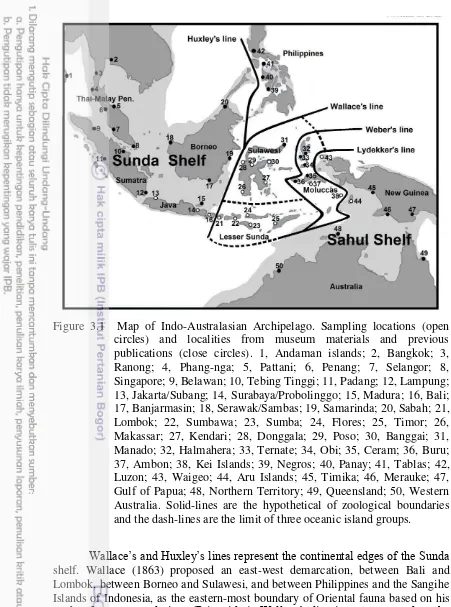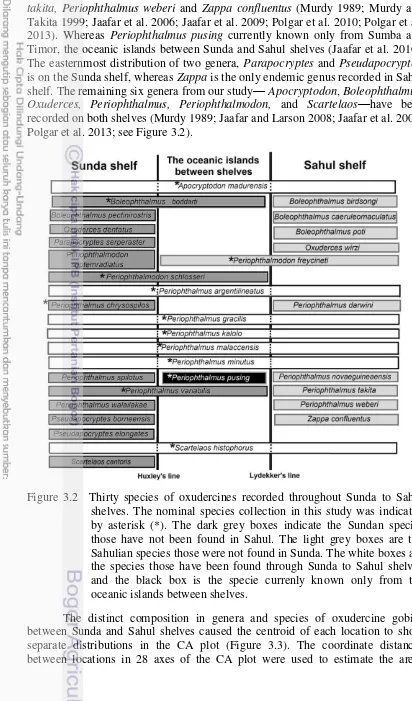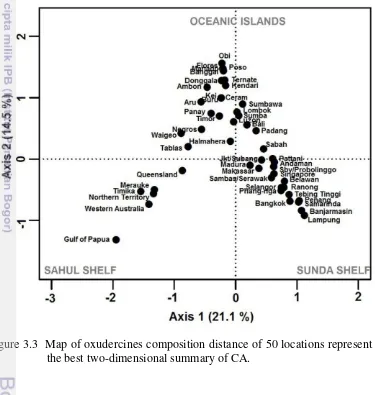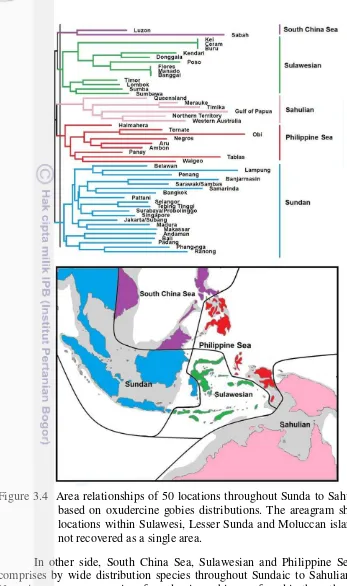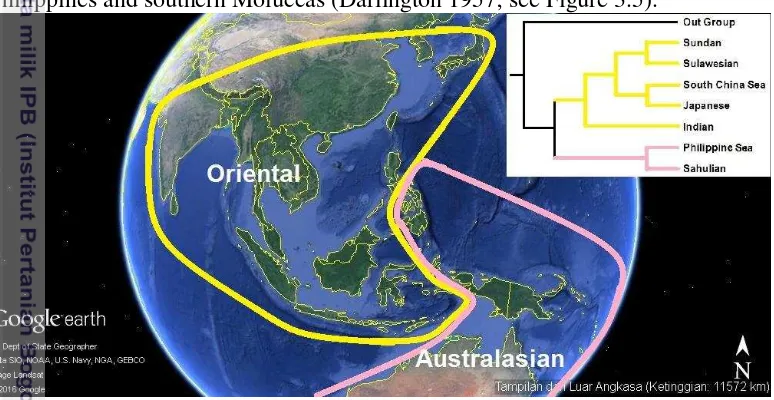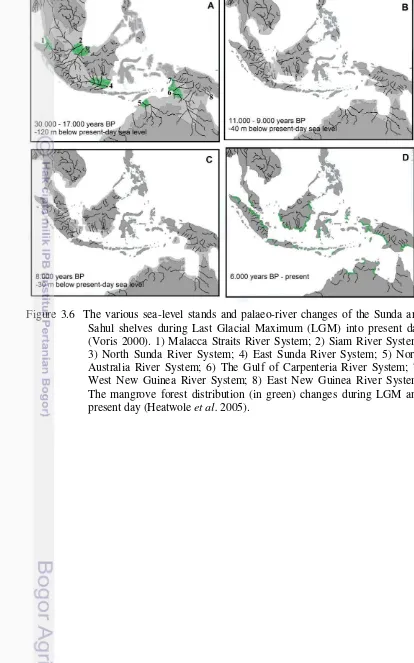Biogeography And Conservation Of Oxudercine Gobies (Gobiidae Oxudercinae) In Lesser Sunda, Moluccas And Sulawesi
Teks penuh
Gambar
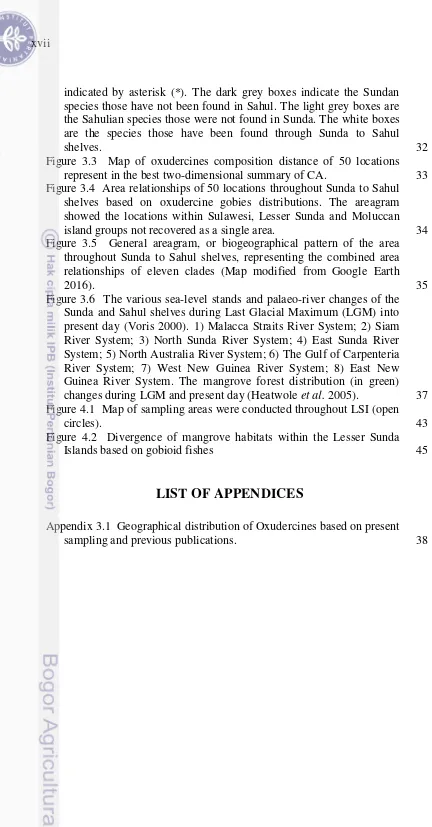
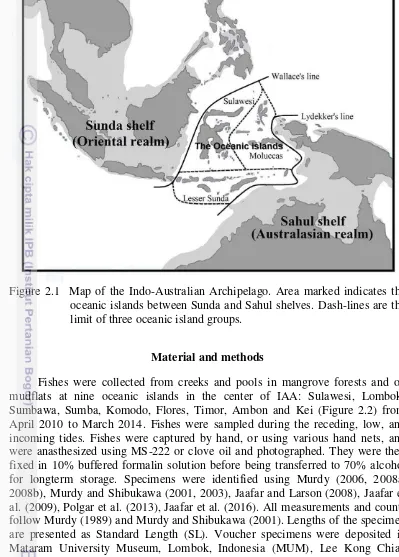
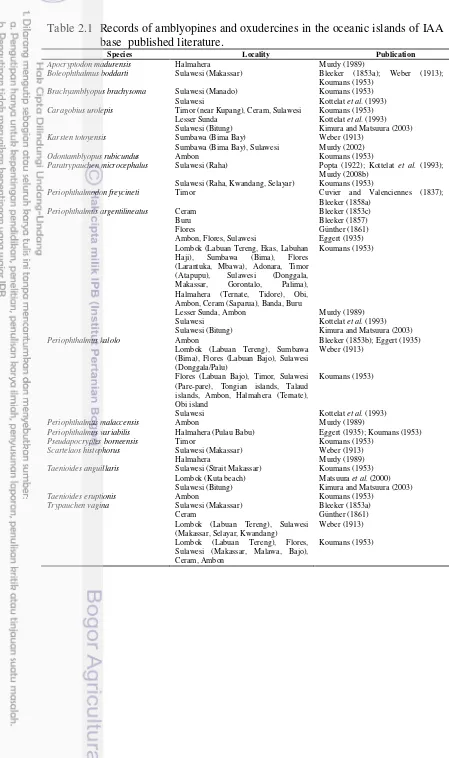
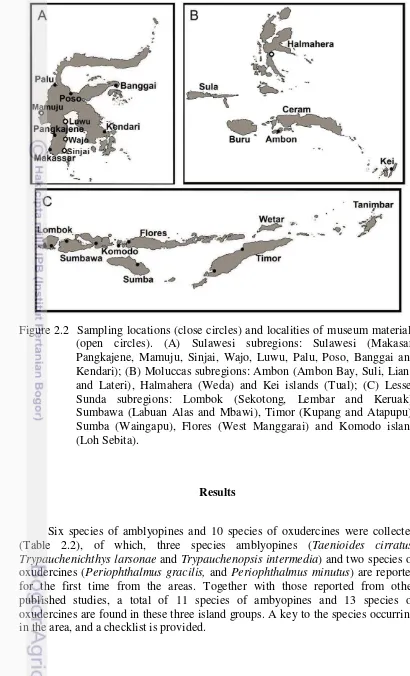
Dokumen terkait
Two known major nesting sites for this species are the Birdhead Peninsula of West Papua and the western side of the Lesser Sunda Region (Alas Purwo of East Java
Abstract: We collected data on the distribution of booted macaques ( Macaca ochreata ) in Faruhumpenai Nature Reserve in South Sulawesi, Indonesia, in order to assess its
The aim of the study was to measure the genetic diversity, polymorphism and heterozygosity in Iraqi buffaloes using microsatellite techniques.. Sixty-nine blood samples were
Twenty two bryophyte species belonging to twelve genera have been collected from different parts of the study area out of which12 species are Lithocolous, 17 species are Terricolous, 7
RESULTS Composition of Bird Species According to Wildlife Conservation Act 2010 Figure 2 depicts the number of bird species observed in Bukit Kuantan rubber forest plantation that
Of 13 species of old >2% sequence divergence Lesser Antillean lineages for which we have estimated colonization times based on molecular phylogenres Ricklefs and Bermingham 2001, seven
Species Importance Value SIV of the collected indigenous and endemic species in Candaba Swamp and Pampanga River in Pampanga Species SIV % Fishes Dermogenys pusilla 67.34
This plot shows that a lot of actual data failed to fall near the Weibull reference line, especially for those in the x ≤ 10 range Prior knowledge about the distribution of time
